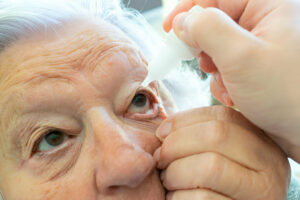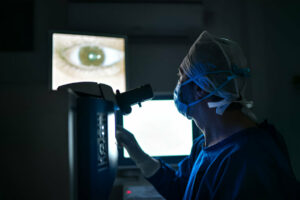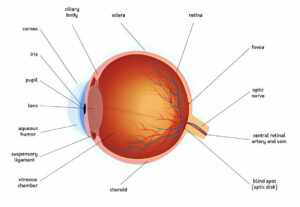Cholesterol has long been seen as a culprit in heart disease. But cholesterol also affects our eyes in direct ways; specifically through conditions like xanthelasma and hordeola.
Flat yellow patches that appear around the eyelids are known as xanthelasma and should serve as an early warning of high cholesterol levels that warrant medical evaluation. They’re harmless, yet serve as an early indicator that a health check should take place.
Xanthelasma
Xanthelasma is an eyelid condition characterized by fat deposits known as lipid-rich plaque. Although not typically painful, lesions caused by this condition may still be unsightly and unsightly. Generally caused by elevated levels of cholesterol or triglyceride in blood due to genetic disorders, diabetes mellitus, Cushing syndrome pancreatitis or certain liver conditions; typically lesions are small and occur clout-style around eyes.
Xanthelasma is typically painless; however, some patients may experience psychological discomfort or desire removal for aesthetic reasons. It affects people of all races and ages; females tend to be affected more than males. Sometimes fat deposits don’t indicate an issue with fat metabolism (known as normolipidemia), and these xanthelasmas don’t indicate obesity either; even patients of normal weight may have them.
Xanthelasma caused by liver diseases is known as hepatic xanthoma and associated with increased risks of cardiovascular disease. If this type of xanthelasma arises due to liver dysfunction, doctors may order a liver biopsy to ascertain its source.
As for what can cause xanthelasma, some of its main sources are genetic conditions, metabolic disorders and leading an inactive lifestyle. Sometimes even low cholesterol levels are enough to create this condition. Lifestyle changes such as decreasing saturated fat intake in your diet, stopping smoking and increasing exercise can all help prevent xanthelasma. Your physician may also suggest the use of topical TCA solutions to diminish fat deposits on the skin surface. If xanthelasma does not respond to treatment, medical advice must be sought. Fatty deposits may need to be surgically removed with local anesthesia; otherwise they could return if you resume a sedentary lifestyle or their cholesterol levels increase significantly. If these measures don’t work, your physician may suggest medication to decrease cholesterol levels instead.
Hordeola
Hordeola, more commonly known as Stye or external or primary hordeolum, is an infection and inflammation of small oil glands on both upper and lower eyelids, resulting in swelling glands enlarging and expanding. A Staphylococcus bacteria typically causes external or primary hordeolum; an internal or secondary stye can develop further within either eyelid.
A stye starts as a red, pimple-like bump that’s itchy and painful. Over time, however, it will burst and drain off of its own accord; leaving behind scar tissue behind and eventually healing itself over time.
If a stye doesn’t drain and heal properly, it may turn into a chalazion – unlike styes which are caused by bacteria infection; rather chalazion’s are due to an enlarged meibomian gland located within your eyelid.
Chalazion lesions resemble styes in that they’re both swollen but painless; however, unlike its smaller cousin, it grows larger over time and takes much longer to drain off completely – often leading to blurred vision as a side effect.
Some individuals are more prone to developing styes or chalazion than others, including people who:
Poor hygiene practices include touching the eyes without washing hands first or sharing dirty contact lens cases, while hot and humid climates foster bacteria growth which can lead to eyelid infections.
If a stye doesn’t respond to over-the-counter treatments, an ophthalmologist may need to pierce it to let out its contents – this process typically uses a small needle. Ophthalmologists often prescribe drops containing antibiotics and cortisone to combat infection and reduce inflammation. If untreated, styes can spread to surrounding skin areas and lead to more serious cellulitis infections that require additional medical treatment. Antibiotics are commonly prescribed to treat this more serious issue, which may require hospitalization in some instances. Common antibiotics used include erythromycin, clindamycin and levofloxacin while stronger antibiotics might include amoxicillin ceftriaxone and tetracycline combination therapies administered intravenously or orally depending on each case.
Skin Tags
Skin tags are small flesh-colored or slightly darker growths that hang off of the skin and tend to be harmless and cause no pain or discomfort. They typically form in areas of friction caused by clothing rubbing against other areas on the body such as armpits, neck, underarms, under the breasts, groin area and upper chest area where clothing rubs against one another frequently. They often grow larger at their base than at their top, can have smooth or rough textures and be attached firmly or hanging off; their causes remain unknown but have been linked with hormonal changes; pregnant women also seem predisposed while others can inherit predisposition.
A new medical device can quickly remove these benign lesions. A flat adhesive patch applies pressure at the base of a skin tag to cause it to shrink within 3-6 days – this technique has been studied through clinical trials and found safe and effective at eliminating skin tags.
As well as this new device, there are various other methods of skin tag removal – including over-the-counter or at-home treatments and surgical removal. One common way of cutting them off with scissors or scalpels. Curettage and cauterization offer more permanent results than cryotherapy but require anesthesia for use, possibly damaging adjacent tissue in the process.
Maintaining a healthy weight and wearing loose clothing are both good strategies to decrease the chances of skin tags developing, while scheduling regular skin checks may also help identify them early and help avoid complications.
Skin tags may seem harmless at first, but they can become bothersome over time. The best solution for this condition is consulting with a dermatologist, who will recommend an appropriate procedure. Beyond traditional removal methods there are also herbal solutions which may reduce skin tag appearance – oregano oil is one such treatment and should be applied directly onto affected area twice daily to reduce their visibility; almond or coconut oil should be applied first in order to minimize potential irritation caused by applying oregano oil directly.
Stroke
Cholesterol may have a poor reputation when it comes to heart health, but this essential fat has an important relationship with eye health as well. A high cholesterol intake increases risk for retinal vein occlusion – when tiny blood vessels that bring nutrients directly to the back of the eye become blocked with blood clots – potentially resulting in permanent blindness or brain damage. A stroke may also occur if one of the large arteries supplying it becomes blocked or bursts; should this happen, seek medical assistance immediately!
Strokes typically cause sudden numbness, weakness or paralysis in one arm or leg. You may also have trouble understanding speech, slurred words or difficulty walking; other symptoms could include sudden loss of balance, tendencies to fall and facial or mouth drooping on one side.
Cleveland Clinic doctors believe those with xanthelasma, yellowish deposits of fatty lipids in the skin surrounding the eyes, are at increased risk for stroke. These harmless and non-cancerous deposits typically form on upper eyelids but may appear elsewhere as well. They have been associated with hypercholesterolemia and hereditary hyperlipidemia as well as diabetes mellitus, Cushing syndrome and pancreatitis.
Your doctor will assess your eyelids for signs of high cholesterol and conduct a physical exam and listen to your heart, along with taking blood tests which can indicate levels of cholesterol, triglycerides and other risk factors for stroke.
Your doctor may also conduct a CT or MRI scan of your head in order to diagnose whether there has been a stroke, blood vessel issues or arterial problems. These diagnostic imaging procedures allow them to pinpoint where any blockages may exist and the type of stroke you could be having as well as the duration and severity of symptoms experienced by you.















